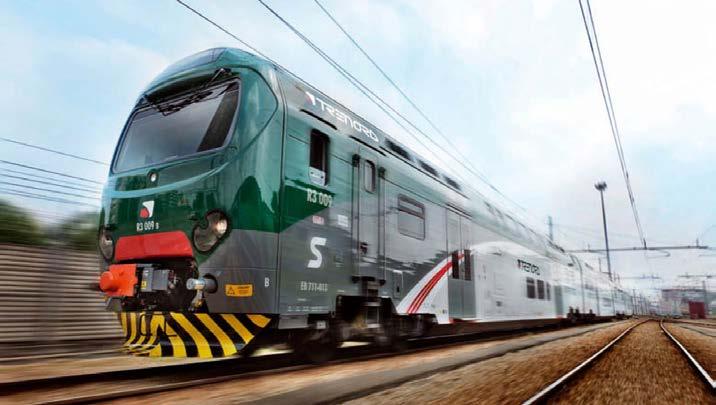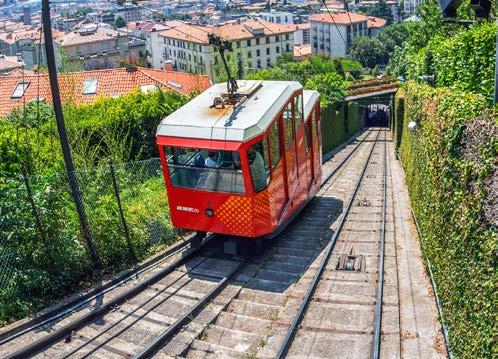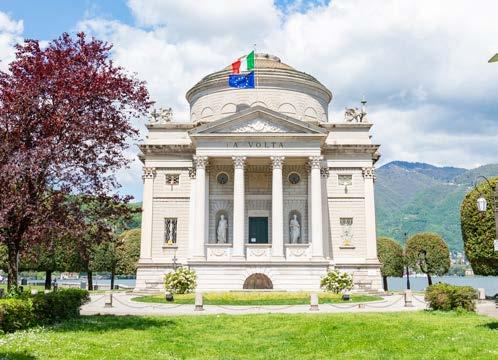
3 minute read
WELCOME TO LOMBARDY
The Lombardy region is one of the richest in attractions in Italy. The area, between Switzerland and Emilia-Romagna, Veneto and Piedmont, offers countless destinations for day trips from Milan.
In addition to Milan, there are 11 main cities that preserve traces of centuries of art and culture - Bergamo, Brescia, Como, Cremona, Lecco, Mantua, Monza and Brianza, Pavia, Sondrio and Varese - and hundreds of smaller villages with art, history and traditions. But Lombardy also has some unmissable natural beauty, such as the vast Po Valley, the parks and the Pre-Alps with the five largest lakes: Garda, Maggiore, Como, Iseo, Lugano and Ceresio.
Advertisement
With its 10 Unesco Sites, as well as 3 intangible heritages including the lutherie art of Cremona, Lombardy is the Italian region with the largest number of such sites: Valle Camonica’s Rock Art, Santa Maria delle Grazie and the Cenacolo Vinciano, the Workers’ Village of Crespi d’Adda, the Sacred Mountains of Piedmont and Lombardy, the Rhaetian Railway between Tirano and Saint Moritz, Mantua and Sabbioneta, Monte San
Giorgio, the prehistoric pile-dwelling sites in the Alps, the Lombard monuments and the city walls of Bergamo. For those who love panoramic places, a trip to Monte Isola is a must, with its breathtaking view of Lake Iseo; to the Sacro Monte of Varese with a view over the plain from the Alps to the Apennines; the Brunate cable car with an absolute view of Lake Como; the ascent to the Torrazzo of Cremona, the highest masonry tower in Europe; the Terrazza del Brivido in Tremosine overlooking Lake Garda at a height of 350 metres.
>> Taking a train trip to Lombardy’s cities of art is the ideal way to rediscover, in a comfortable and sustainable way, the beauty of our region's towns, visiting exhibitions, museums and monuments. www.trenord.it/ giteintreno/citta-darte
► The symbol of Milan, the city of design, fashion and business, is the Duomo, close to which are the 18th-century Teatro alla Scala and the Galleria Vittorio Emanuele II: these are the three most visited landmarks in the city. Not to be missed are the Sforza Castle, the Basilica of Sant’Ambrogio, the complex that houses the Church of Santa Maria delle Grazie and the Cenacolo Vinciano.
◄ Two cities within a city, Bergamo (“Alta” and “Bassa”) is linked by two funicular railways. Five kilometres of walls surround domes, towers and palaces, including the Accademia Carrara, the Piazza Vecchia, with its Civic Tower and the Palazzo del Podestà, the “perfect” square also loved by the architect Le Corbusier. Bergamo is also the birthplace of the composer Gaetano Donizetti, to whom the city dedicates a major opera festival every year. (50 km from Milan)

▼ Known throughout the world as the “City of Art and Music”, Cremona is the cradle of the violin, as it is home to the Violin Museum. In the medieval Piazza del Comune you will find the Cathedral, the Torrazzo, the highest in Italy at 121 m, the Baptistery, the Gothic Loggia dei Militi and the Palazzo del Comune. Don’t miss a visit to the magnificent Ponchielli Theatre, home to important musical and theatrical seasons. (76 km from Milan)



► Brescia presents itself in its Renaissance guise with its marvellous salon squares, an embattled castle, two cathedrals, a theatre created as a tribute to Napoleon Bonaparte and the Museum of Santa Giulia, a Unesco World Heritage Site. The famous 1000 Miglia race has been held here every year since 1927, and in September the world’s best-loved Opera Festival takes place here, transforming the entire city into a magical open-air theatre. (95 km from Milan)
◄ Como is the city of water, light and silk, rich in history and culture. The Volta Temple is a small Pantheon on the banks of the Lario, built in memory of the physicist Alessandro Volta. Strolling within the medieval walls, among alleyways and old shops, the late Gothic Cathedral and the imposing Broletto from 1215 stand out. A dynamic and entrepreneurial town.


(50 km from Milan)
▼ In a natural setting of rare beauty lies the city of Lecco, where Alessandro Manzoni set his masterpiece “I Promessi Sposi” (The Betrothed), and where there are monuments in baroque and neoclassical style. The Lecco branch of Lake Como is characterised by the S. Martino and Barro mountains, the Resegone and the Grigne. Lecco is the starting point for fantastic trips around the lake, to discover historical villas and sumptuous palaces. (55 km from Milan)










